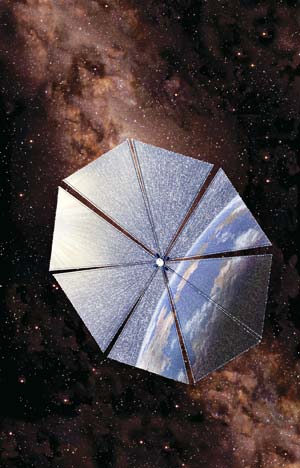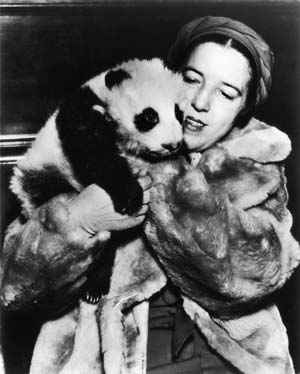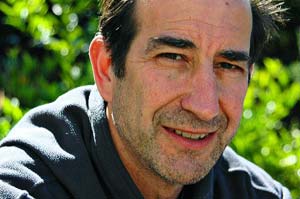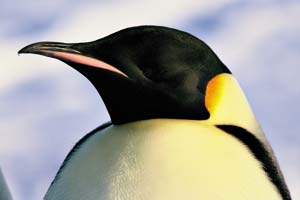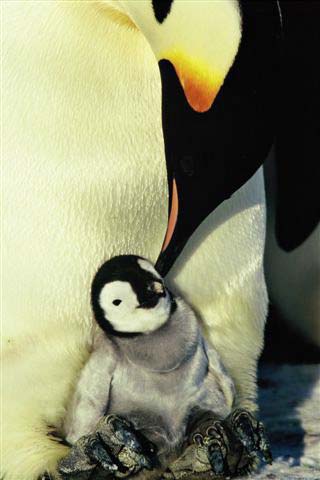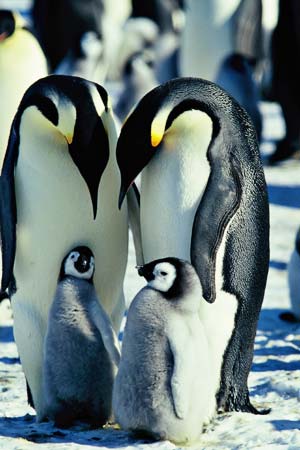July 16, 2005
Air Date: July 16, 2005
FULL SHOW
SEGMENTS
Whither NEPA?
View the page for this story
The landmark National Environmental Policy Act faces a possible rollback as energy legislation is currently being debated in Congress. Opponents say the environmental review the act provides is sometimes unnecessary and repetitive, while proponents counter the act provides the public crucial environmental oversight of federal projects. Host Steve Curwood explores both sides of the issue with a Wyoming cattle rancher who favors stronger environmental review and an energy industry advocate who says the act is often misused as a stalling tactic. (05:30)
Sailing into Space
View the page for this story
Space engineers are looking for new ways to power spacecraft, especially once they’re launched into orbit. Astrophysicist Neil deGrasse Tyson talks to host Steve Curwood about advances in space propulsion technology, including the recent Cosmos 1 mission that was designed to use sails powered by the pressure of sunlight. Artist image of Cosmos 1 in flight, reflecting the Earth. (06:30)
Disappearing Wildflowers
/ Nancy CohenView the page for this story
Biologists in some states around the country say that the number of wildflowers and wildflower species is declining. As Nancy Cohen of WNPR reports, they believe that deer are the primary cause of the problem. (06:00)
The Lady and the Panda
View the page for this story
In 1936, the most sought after prize among the world’s adventurers was catching the rare and elusive panda bear. That the winner was a well-known New York dress designer and socialite, seems nearly impossible. She was, after all, the person who once famously quipped, “the two things I hate most in life are going to bed at night and getting up in the morning.” Author Vicki Croke unravels this improbable tale in her biography of Ruth Harkness called “The Lady and the Panda,” and she is interviewed by host Steve Curwood. Ruth Harkness and Su-Lin in the United States. (Photo: Mary Lobisco ©) (11:00)
Emerging Science Note/Cultivating Meat
/ Sarah WilliamsView the page for this story
Living on Earth's Sarah Williams reports on a new product that could soon hit the deli department: lab-grown meat. (01:20)
The Green Screen
/ Guy HandView the page for this story
People who make environmental films say it's too difficult to find airtime on television. So, as Guy Hand reports, they're taking advantage of the advances in digital media to find new ways to reach viewers. San Francisco environmental filmmaker Frank Green. (Photo courtesy of midwestfrogs.com) (11:00)
March of the Penguins
View the page for this story
The documentary "March of the Penguins" has become a surprise hit among moviegoers this summer. Host Steve Curwood talks with Sea World bird curator Lauren DuBois about the appeal of these Antarctic waddlers, and about the almost impossible journey they take to make a family. (Photo: Jérôme Maison. © 2005 Bonne Pioche Productions / Alliance De Production Cinématographique) (04:50)
This week's EarthEar selection
listen /
download
Show Credits and Funders
Show Transcript
HOST: Steve Curwood
GUESTS: Marjorie West, Lee Fuller, Dr. Neil deGrasse Tyson, Vicki Croke, Lauren DuBois
REPORTERS: Nancy Cohen, Guy Hand
NOTE: Sarah Williams
(THEME MUSIC)
CURWOOD: From NPR - this is Living on Earth.
(THEME MUSIC – UP AND UNDER)
CURWOOD: I’m Steve Curwood. If you’re one of the folks who find Living on Earth on the internet as well as public radio, some nature filmmakers would like to find you. As television markets change, including public TV, more and more nature filmmakers are finding an audience through the web.
MCGOWAN: I've had programs on PBS. They air and then they go away (laughing). And even I forget about them. But the web site, you know we're getting like 4500, 5000 visits a month. I think we'll probably hit about 60,000, 70,000 people by the end of this year and that's a decent viewership in a decent PBS market. Yet what's cool is that people keep coming back .
CURWOOD: And people also keep coming back to the sleeper movie hit of the summer. “The March of the Penguins” and more. This week on Living on Earth. Stick around.
[NPR NEWSCAST (MUSIC: Boards of Canada “Zoetrope” from In A Beautiful Place Out in the Country’ (Warp Records – 2000))]
ANNOUNCER: Support for Living on Earth comes from the National Science Foundation and Stonyfield Farm.
Whither NEPA?
CURWOOD: From the Jennifer and Ted Stanley Studios in Somerville, Massachusetts, this is Living on Earth. I’m Steve Curwood.
Since 1970, the federal government has been required under the National Environmental Policy Act to assess the impact of federal actions. In recent years, some activists have used this law to challenge the rapid expansion of oil, and especially gas drilling in the West. This year’s version of the energy bill passed by the House includes provisions to limit the environmental impact reviews of certain oil and natural gas operations. Proposed changes would affect reviews of individual drilling sites of less than five acres and disposal of wastewater from coalbed methane wells, if states have already allowed it.
These states include Wyoming, where Majorie West raises hay and cattle on 13,000 acres in the Powder River Basin. A number of coal bed methane wells abut her property, and she says wastewater runoff with high levels of sodium has destroyed one-quarter of her hay meadow and left much of her best grazing land covered with salt-tolerant weeds her cattle won’t eat. Majorie West, what’s your opinion of efforts to limit disposal of coal-bed methane wastewater from review under the National Environmental Policy Act?
WEST: I think it is absolutely horrendous. To my way of thinking, there are not enough laws protecting the environment in place right now. And if these companies are exempt from what laws there are, it’s going to devastate the land.
CURWOOD: How would you respond to people who say that the National Environmental Policy Act that requires environmental impact statements, is often used as a stalling tactic by environmental activists just to tie up vital energy projects?
WEST: See, I do not believe this at all. I belong to several environmental groups and we are not against coal bed methane gas development. You know, we realize our country needs the energy. However, we are for it being done right. Powder River has a very unique ecosystem. If much more of this methane gas water is dumped into Powder River, it is going to destroy that ecosystem.
CURWOOD: So, what would you like to see Congress do about this?
WEST: I would like to see them have retroactive, much more stringent laws, require these companies to either re-inject the water, treat the water so that it can be used, and this can be done. You know, this water can be treated and yes, it does cost the companies money to do it. However, right now they are making more money than they have ever made in the history of the oil and gas industry. I think they can afford to take care of this water and do it so it’s not a hindrance.
CURWOOD: Marjorie West has been a rancher and farmer in Spotted Horse, Wyoming for the past 51 years. Thanks for taking this time with me today.
WEST: You’re very welcome.
CURWOOD: And now let’s turn to Lee Fuller. He’s vice president for government relations for the Independent Petroleum Association of America. Lee Fuller, now how do you respond to complaints from ranchers like Marjorie West that rather than less federal environmental review, practices like disposal of coal bed methane wastewater should actually be more tightly controlled under the rules imposed by the National Environmental Policy Act, or NEPA?
FULLER: I’d say that if they look at the number of opportunities that they have to raise those environmental issues, they are more than adequate. There’s probably at least two times in the planning process by the federal government and then there’s opportunities at the permitting stage where there are points to be raised. The purpose of NEPA is not to deal with minor events like this, but to deal with much larger ones and I don’t think that simply trying to keep expanding the role of NEPA is the solution.
CURWOOD: This House bill would exempt seven oil and natural gas activities from environmental impact assessments. Why is it necessary to specifically exempt these activities from an analysis of their impact on the environment?
FULLER: Well, I think it’s first important to recognize that this is one step in a larger process and that these actions have gone through NEPA processes before they ever reached the stage that this section affects. They would have either gone through the process once at the point of resource management plan and a second time at the leasing phase. These are really minor actions that most likely shouldn’t even be under the scope of the NEPA process because that effects major federal action.
The reason why I think they’ve been identified is that there have been efforts to try to broaden the application of NEPA, in our view, to principally to try to delay decisions on projects and this would essentially say one or two reviews is enough, the permitting process on top of that is enough, NEPA is not needed in a third round.
CURWOOD: I see then, so perhaps those critics would say that this process limits the ability of the public to try to intervene in a project along these lines that they think may not be appropriate.
FULLER: Well, the purpose of NEPA is to try to make sure that all these issues get aired and then the government makes its decision. That’s been done prior to reaching this stage of the actions that are affected by this language. So that there’s been ample opportunity for the public to make their case and to have the government adjust the requirements accordingly.
CURWOOD: Lee Fuller is with the Independent Petroleum Association of America. Thanks for taking this time with me today Lee.
FULLER: You’re welcome.
Sailing into Space

Artist image of Cosmos 1 in flight, reflecting the Earth. (Photo: Rick Sternbach, The Planetary Society ©)
CURWOOD: Since the beginning of human time, people have traveled the waters of the world by drifting and paddling. But then, centuries ago, when European explorers set out to travel the globe, they mastered a comparatively new technology, riding the wind. Now, once again, riding the wind is a new frontier of technology, but this time for space travel. The modern day equivalent of oars and sweat is the chemical rocket, which we use to launch spacecraft like the shuttle into orbit, and then for the most part we drift. But last month, a privately funded mission, Cosmos, was launched, this time with sails designed to catch the solar wind. The expedition failed when a launch vehicle failed to fire properly. Yet the prospect of solar sailing and other new ways to power space craft still intrigue scientists.
With me now is Dr. Neil deGrasse Tyson, an astrophysicist, director of New York’s Hayden Planetarium and a regular contributor to our program. Neil Tyson, welcome back.
TYSON: It’s always great to be back. Thanks for having me.
CURWOOD: Solar sail technology is pretty amazing. So, just how does a sail work when it’s attached to a spacecraft?
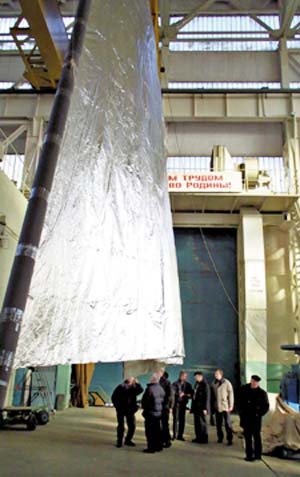
Engineers watch a zero-gravity simulation of the sail deployment of Cosmos I and test its mechanical configuration. This photo was taken in January 2001 at NPO Lavochkin, the world's largest manufacturer of robotic spacecraft. (Photo: Louis Friedman, The Planetary Society ©)
TYSON: The Cosmos 1 sail is, I don’t know if anyone has ever seen pictures of it, but in a fully deployed state, it’s a hundred feet across with its sails spread out like a daisy, each were maneuverable so you can change the angle just the way a person sailing on a sailing ship would change the angle of their sails. Of course, you have to be able to do that to control which way you’re going, but this technology which was simply large mylar, reflective sails was, tended to be a demonstration of the pressure of sunlight.
CURWOOD: Yeah, so what is the pressure of sunlight? I mean, people think of outer space being just space, being a vacuum. I mean, that’s what we learned in elementary school--that there’s nothing there, but there is something there apparently.
TYSON: Yeah, well light moves through space. Of course, we see the sun from earth so that means the sunlight reached us through the vacuum of space. So what you do is you exploit that fact and you calculate how much pressure, how much little impulse you’ll get from each of the photons of light that comes from the sun. And the sun emits a lot of photons of light and as each photon strikes the reflective sail and bounces back off, that little recoil of the photon forces a response to the spacecraft and pushes it into another orbit. So the way you do this is, you don’t get into orbit around earth and then line up your sails and then head towards Mars, that’d be too easy actually if that’s all it was. (laughter) The way this works is, the energy from the sun, you keep pitching the sails in such a way that the sunlight pushes on your craft into higher, and higher, and higher orbits… until you get an orbit that’s so large that it intersects the orbit of Mars and then you just go to Mars or you go to the moon or whatever would be your destination.
So the drawback is it’s slow. If you wanted to do this and get to the moon, it would take you a couple years, whereas ordinary rockets that we know and love will get there in three days. So, it might not be your first choice of propulsion for astronauts, but maybe you have a supply ship that carries food of high shelf-life (laughter). You know like rice, or breakfast cereals, things like that. You can send that long in advance of your trip and land where you need it to land and then you come in on your few day trip and there you have it. And so it’s an important auxiliary tool for the exploration of space.
CURWOOD: Now, the standard technology to get something to space is to use chemical reactions, burning either liquid fuel or solid fuel or whatever. But once in space there are no gas stations up there, Dr. Tyson. So, how do we keep our spacecraft first powered up to handle just all the electronics that we have on board to do the things that they do?
TYSON: That’s an excellent question. We take for granted that when you want to drive across country, that you don’t have to carry a tanker truck with you to give you all of your fuel because there are places to stop and load up.
CURWOOD: You just have to take lots of money with you these days.
TYSON: Lots of money to buy the fuel at three dollars a gallon or whatever it’s costing in some parts.
CURWOOD: Yeah.
TYSON: And so, without fuel stations, filling stations across the solar system or the galaxy, you have to bring all the fuel you’re going to use with you and hence this tremendous pressure on the frontier of space exploration to come up with an efficient fuel source and chemical energy is just not efficient. You might remember the Saturn 5 rocket from the 1960s. It was 32-some odd stories tall and waaaaaay at the top there’s a little place, that’s where the astronauts were, and all the rest of what they were sitting on, is basically fuel tanks just to get them to the moon and back. So this is a problem and it’s a challenge and so you have to be creative about this. So, one way is you have solar panels, that gives you sort of electricity on board, that’s what the space station has, but now if you want propulsion, you’ve got to be even more clever than that and the most efficient means of propulsion we know involves getting energy from nuclear reactors. Of course, that’s the n-word and there’s a lot of knee-jerk resistance to putting nuclear reactors in space, but let me just say that if you can imagine that you have people working on this to make it a safe technology so that we can continue our exploration, there’s a whole branch of NASA that’s tasked with just figuring out this problem. It’s called the Prometheus Project. So, that’s the next frontier in space propulsion.
|
CURWOOD: What form of space propulsion would you like to see in the future? TYSON: I like the warp drive concept. I’d first seen it in “Star Trek.” I don’t know if it predates that, but you are what you are and there’s your destination really far away and you figure out how to manipulate the fabric of space and time so that the space between you and your destination is warped. And then you cut a hole through that warp and then you basically tunnel from where you are to where you’re going, bypassing the otherwise warped distance that is otherwise warped out of your view. And then you land where you are, you unwarp space, you cross the galaxy during the TV commercial which is what happened during “Star Trek.” And what would otherwise take you hundreds of thousands of years to make this trip, you can now do in just a matter of minutes. That’s to me the most intriguing frontier of science and, of course, as well as engineering that I can’t even imagine when that would be real, but it’s fun to dream about because in that case the sky’s the limit. CURWOOD: Dr. Neil deGrasse Tyson is an astrophysicist and director of New York’s Hayden Planetarium. His latest book is called “Origins: Fourteen Billion Years of Cosmic Evolution.” Neil, thanks for taking the time today. TYSON: It’s a pleasure to be here again. [MUSIC] CURWOOD: Coming up. Oh dear, where have all the wildflowers gone? Keep listening to Living on Earth. Related links: [MUSIC: Daniel Lanois “Frozen” from ‘Belladonna’ (Anti - 2005)] Disappearing WildflowersCURWOOD: It’s Living on Earth. I’m Steve Curwood. Let’s face it, there’s probably no more appealing creature than a baby white tailed deer. The eyes of a fawn are especially friendly, so as the population of deer has exploded in the suburban eastern U.S., people have hesitated to limit their numbers, even as deer have been linked to the spread of Lyme Disease. Now there’s another problem that may put more deer into the cross hairs of hunters: they are being blamed for a sharp decline in wildflowers. From WNPR in Hartford, Connecticut, Nancy Cohen reports. [OUTDOOR SOUND] COHEN: It’s a warm sunny day at the Mianus River Gorge Preserve which straddles the border between New York and Connecticut. Executive director Rod Christie is standing on the edge of the preserve’s old growth forest. He remembers leading wildlife walks here 20 years ago when the plants were tall and dense. CHRISTIE: The understory vegetation was up to my waist when we were walking along the trail and you just don’t see that now. Now there’s nothing when you’re walking along. COHEN: The preserve once had nearly 230 species of wild flowers. Christie says the increase in the deer population over the last two decades parallels a decline in certain wildflower species. CHRISTIE: Some species we don’t see at all any more. Some species we see rarely and they’re small pockets. Some species we see, but they don’t flower and they aren’t in healthy condition. So what we wanted to make sure is that we didn’t lose everything forever. COHEN: In the early 1900s there were hardly any deer in parts of the northeast due to hunting and deforestation. Some states tried to bring deer back by restricting hunting, which worked maybe a little too well. Today, there are an abundance of deer in the region and they’re being blamed for decimating wild plants. Christie and his colleagues have set out to discover what would happen if deer were kept away from wild flowers. [SOUND OF WALKING THROUGH WOODS] COHEN: Christie walks through a stand of red maple, white oak and hemlock. He stops at a seven-foot black plastic fence surrounding a half-acre plot. Christie points out purple trillium growing inside the fence. CHRISTIE: When I first started in this exclosure, I had seven individual plants. Now I have close to 300 plants. So that’s a dramatic change. COHEN: Not only are the numbers increasing, both trees and wildflowers are taller inside the exclosure than outside. CHRISTIE: There’s the wild geranium you know that’s flowering in here, trillium is going by, but you can see the size of the plants and how robust they are. There’s a basswood. A little basswood, that would be candy to a deer. COHEN: Outside the exclosure where the deer roam free the plants are short and sparse, but the wildflower decline isn’t unique to this preserve. Scientists are observing a similar trend in many parts of the country. In Maryland and Wisconsin, Massachusetts and Pennsylvania, usually in forests near suburban areas where deer populations have increased. Richard Goodwyn was one of the first presidents of the Nature Conservancy. He says deer have been feeding on the native flora where he lives in southeastern Connecticut for at least twenty years. GOODWYN: I have a list here of some of the things that I have observed that have been chewed up in flower and then not in flower. COHEN: The 94-year old botanist sits on a living room chair and picks up a lined piece of paper. In careful script he’s noted the nearly 25 species deer are eating in Bernibum Preserve in East Hatham, his home since 1956. Lillies and orchids are the hardest hit. GOODWYN: Wood lily, is one, when it’s gone, I haven’t seen it in flower. Ladies’ tresses is another orchid, little white orchid that grows out in the fields, full bloom, then chewed up. COHEN: Without flowers, a plant can’t produce seeds and without seeds there are no new plants. Goodwyn is worried about the loss of biodiversity and he says with fewer flowers the world would also lose a bit of its beauty. GOODWYN: It’s an emotional thing and a lot of people would feel very deprived if they weren’t able to go out in the woods and they weren’t able to pick a flower. And if you have a diversity of flowers, it makes the whole thing much more interesting. COHEN: Back at the Mianus River Gorge, Rod Christie tells me he doesn’t want to lose the preserve’s diversity of flowers. But right now, deer seem to have the upper hand. As if on cue, one makes a cameo appearance. CHRISTIE: There’s a deer coming up around the edge there (laughter). COHEN: Wow. CHRISTIE: That’s a white-tail deer actually looking at us right now, outside the exclosure, fortunately. COHEN: Looking at us with those big, Bambi-like eyes, raising the question of what to do about all these deer. Some states like Connecticut, have a long hunting season and allow hunters to use bait in some areas. Birth control for deer is still under research. It’s illegal to trap and move them. At a nature preserve hunting is perhaps the most effective method, but it’s controversial. Christie says the least intrusive and the most effective option is to use predators. CHRISTIE: We’re trying to encourage coyote populations, bobcat populations, is it possible to reduce the deer population to a level that the coyotes could keep it under control. COHEN: However the deer are managed inside and outside the preserve, fewer of them could give wildflowers the chance to rebound. For Living on Earth, I’m Nancy Cohen in Bedford, New York. [BIRDS CHIRPING]
The Lady and the Panda
Ruth Harkness and Su-Lin in the United States. (Photo: Mary Lobisco ©) CURWOOD: In 1936, New York socialite and dress designer Ruth Harkness, who once said she wouldn’t walk a block in Manhattan if she could take a cab, set out on an impossible journey to do an impossible task. She traveled to the most rugged and remote terrain of China to capture one of the planet’s most elusive creatures, the panda bear. She walked up to thirty miles a day in her quest, amid the dangers of China’s raging civil war. Winning the race to be the first person to bring a live giant panda to the west, she set off a national sensation in the U.S. upon her return. Joining me now is author and Living on Earth contributor Vicki Croke, who’s written a biography of Ruth Harkness, called “The Lady and the Panda.” Vicki, good to talk with you again. CROKE: Steve, thank you for having me on. CURWOOD: Now, how did she get into this? Obviously, a dress designer doesn’t set out in life to go bring back the first live panda. CROKE: She had always fantasized about visiting exotic places and she fell in love with a man named William Harvest Harkness, Jr. You can tell just from that name his background. He was an ivy league educated rich boy, an adventuring rich boy and he joined in this great race which was very hot at the time to try to be the first person to bring a giant panda back to the States. He went over to China, spent two years there and died very young, 34 years old, of throat cancer. And amazingly, at that moment, Ruth decided she did not want his mission to die with him and that she would take up his cause. 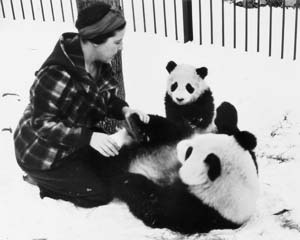 Caption: Ruth Harkness helps introduce Su-Lin to Mei-Meil at Chicago’s Brookfield Zoo. (Photo: Mary Lobisco ©) |
CURWOOD: Tell me more about Ruth Harkness. What was she like as a person, do you think? CROKE: Very intriguing person and what we know today from the few people who are alive to tell the story of having met Ruth Harkness is that she’s the kind of person who would just light up a room. Very charismatic, very striking. Every man wanted to romance her. Every woman wanted to be her best friend. She’d already transformed herself once before. She came from a small town in western Pennsylvania, and when she moved to Manhattan she became a dress designer and a socialite sought after for every party. She was a quintessential flapper. She said that there were only two things she hated to do: go to sleep at night and get up in the morning. CURWOOD: A lot of people were trying to get pandas in China. Some pelts have been brought back. No one had brought a live one back and all these adventurers were men. How is it that a woman is able to succeed here? And why, in fact, do you think from your studying this story do you think that being a woman perhaps gave her an edge to succeed? CROKE: Even at the time, people began to say that she had not succeeded despite being a woman, but because of it. Many of the western adventurers, all male, would come into a country and they’d lay out the maps, they’d hire porters and they would direct themselves to wherever they thought the prize would be. Ruth Harkness took a very different tack. She came to Shanghai. She decided she did not want to work with fellow westerners. She wanted to work with a Chinese partner who was Quentin Young, 21 years old, and she listened to what he had to say. He had explored in that area before. He spoke the language and he told her he could bring her to where the pandas were. CURWOOD: Okay, she goes to the edge of China, way up towards Tibet, to look for those pandas. How does she find one? CROKE: It’s an interesting story. Soon after they got to the mountains, the Qionglai Sagan, they had three camps set up and within days of being in the second camp she went out with Quentin Young, the hunters and the porters. It was extremely foggy up at that elevation, which was probably about 10,000 feet. And that morning they were hiking through the wet bamboo forest, soaking wet from head to foot, couldn’t see more than a foot in front of them, and a rifle was fired and Harkness was petrified. She’d given orders that no panda was to be shot; she was afraid of what was happening around her, but she couldn’t see. It was absolute chaos and confusion and then they all heard a baby cry and Quentin Young ran over to the hollowed out rotted tree nearby and he pulled out from that hole in his hands a tiny little black and white ball of fluff which was a young panda. CURWOOD: Now, originally the notion of going to China to bring back a live panda was, I gather, to bring back, you know, a big one. Because they’re giant pandas. So, how did bringing back a baby panda fit into that vision? CROKE: It’s interesting. It solved a problem that a lot of people had thought about and that is that bamboo is the diet of an adult panda. Also, pandas are rather large, pretty ferocious animals. They want to be left alone. So all of the western hunters who came in brought traps and chains and cages in order to subdue these animals they assumed they would catch. Ruth Harkness in Shanghai one night thought, was thinking about the bamboo problem--how do you keep feeding a panda when you take it away from the bamboo forest? And she had an epiphany and she turned on the lamp next to her bed and she wrote down on a list, “baby bottle” and “formula.” And so she had with her the most important equipment she could have brought and that is a means of feeding a baby panda. And as luck would have it, that is exactly what she got. CURWOOD: So, how does she manage to get this animal across the world? I mean, one that’s still very difficult to keep in the zoo and nearly impossible to breed… And why do you suppose that she was thus the first able to do this? CROKE: Today, just this week, we know that a baby panda was born in the National Zoo and everyone’s very excited about it. If that panda survives it will be only the third, young panda, infant panda, born in the U.S. to survive into adulthood and that really highlights how incredible Ruth Harkness’ accomplishment is because she took her little baby panda from deep inside the forest between Tibet and China to Shanghai, then on a luxury liner across the ocean to San Francisco. She went from there to Chicago and on to Manhattan and then she kept the baby in Manhattan in her flat, went from cocktail party to cocktail party, rode around in taxi cabs with him. CURWOOD: With this baby panda in her arms?
|

